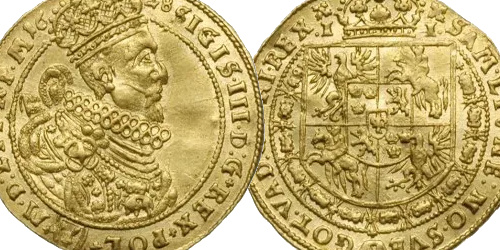Variant of the design marked with series A. and consecutive numbering. Diagonal red print "MODEL" enclosed in double lines.
Banknote bearing PMG certificate with PMG 65 EPQ grade.
A beautifully preserved banknote with the second highest grade in the PMG register. Natural.
A rarer and sought-after design, eagerly included in circulating banknote collections due to the low availability of a circulating version in an attractive state of preservation.
In 1944, the Polish lands fell under Soviet influence. In 1944, after the expulsion of German troops beyond the Vistula River, the organization of a new monetary system began. In the conditions of the still ongoing war, the return of the Bank of Poland from London was impossible, and the communist authorities did not agree to maintain the activities of the Bank of Issue in Poland. At the end of August, the Central Treasury Fund was established, which issued paper zlotys with an issue date of 1944. The exchange rate of the zloty was equalized with that of the ruble. In mid-January 1945, the National Bank of Poland was established and took over the duties of the central bank. At the exchange of the Polish Emission Bank's zlotys into NBP zlotys, it was allowed to exchange at a ratio of 1:1 the amount of 500 zlotys for each adult.
In order to restore the country's market balance between monetary circulation, wages and prices, a second monetary reform was necessary. The need for it began to be considered in 1947. At that time, they proceeded to prepare new monetary signs in the form of coins and banknotes to be introduced into circulation.
The monetary reform was introduced by the Sejm with the law of October 28, 1950. At that time, a new monetary unit was introduced with a parity of 1 zloty =
The 1950 money exchange had no restrictions on the amount, but there was a very short time limit on the amount. It occurred in the ratio of 100 old zlotys to 1 new zloty. In 1950, prices and wages were converted at an exchange rate of 100:3. The introduction of such a ratio of old to new zlotys at the exchange resulted in a significant decrease in the real value of money held by the population. The implementation of the 1950 reform of the monetary system was intended to prevent inflation and raise the purchasing value of the zloty.










